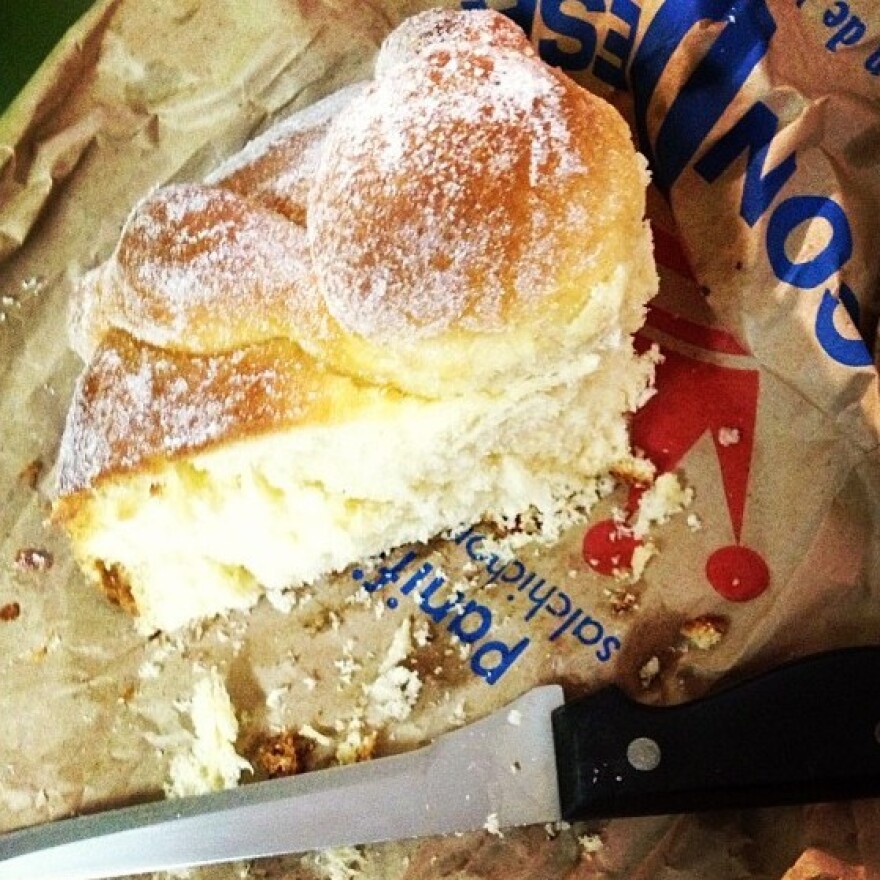MICHEL MARTIN, HOST:
How do you honor the memory of your ancestors, elders or loved ones who've recently passed away? For those who celebrate Dia de Muertos, or Day of the Dead, it probably involves an altar with family pictures, flowers and a variety of offerings. And while traditions vary, food and drink are some of the most important Day of the Dead offerings.
MARIANA NUNO-RUIZ MCENROE: So Dia de Muertos is a way that we pamper and receive of our departed. We make the foods that they enjoy the most in life.
MARTIN: That's Mariana Nuno-Ruiz McEnroe. She is originally from Guadalajara, Mexico, now living in Austin, Texas. Mariana and her husband, Ian McEnroe, co-authored a new cookbook called, "Dining With The Dead: A Feast For The Souls On Day Of The Dead." She says cooking and eating are always a big part of any traditional Mexican family celebration.
NUNO-RUIZ MCENROE: Cooking for us is an act that shows appreciation for family and for our friends.
MARTIN: That's also true for the Day of the Dead. Ancestors' favorite foods are prepared and left on a family's altar as ofrendas, offerings meant to help entice the spirits of the deceased back for a visit on the first two days of November. And, of course, the dishes can also be enjoyed by family members who gather to remember them.
McEnroe says your altar can have whatever edible offerings you like. Tamales are always a big hit, but one offering is a must - pan de muertos, or bread of the dead.
NUNO-RUIZ MCENROE: This bread is thought to have been prepared to resemble a skull and bones soon after the Spanish friars came to Mexico. And they found this bread to be the best substitution for the real skulls that were part of the native rituals in Mexico. So today, eating pan de muerto and placing it on the ofrenda and at the altar, it represents how we commune with our departed.
MARTIN: She says hot drinks like atole, a sweet, corn-based beverage, are also a must for family members holding vigils and celebrating their ancestors through chilly fall evenings. And yes, despite its name, this holiday is meant to be a happy one.
NUNO-RUIZ MCENROE: Through the food and through the elements that are in the altar, it becomes celebrating life the way through memories. So then it's a joyful act. It's not sad.
MARTIN: McEnroe says this year she'll be cooking to honor the memory of her grandmother, Margarita (ph).
NUNO-RUIZ MCENROE: She was one - the first person that I saw watching how to cook in the kitchen, and it was her who inspired me and who made me, you know, awaken the curiosity in the kitchen.
MARTIN: And what is she making for her beloved grandmother this Day of the Dead?
NUNO-RUIZ MCENROE: We are making just, like, one dish for everyone on our altar. So we have decided to make these Swiss chard tamales, which are very, very delicious, and they're filled with queso fresco or vanilla. And then they have a little tomato sauce on the - with cinnamon on the top.
MARTIN: She and her husband will also be making a marigold flan. The bright orange and yellow flowers are everywhere during Day of the Dead. Their scent is said to help lead the spirits from their burial places back to their family homes. That was Mariana Nuno-Ruiz McEnroe. The book she co-authored with her husband, Ian McEnroe, "Dining With The Dead: A Feast For The Souls On Day Of The Dead," is out now.
(SOUNDBITE OF MUSIC) Transcript provided by NPR, Copyright NPR.


